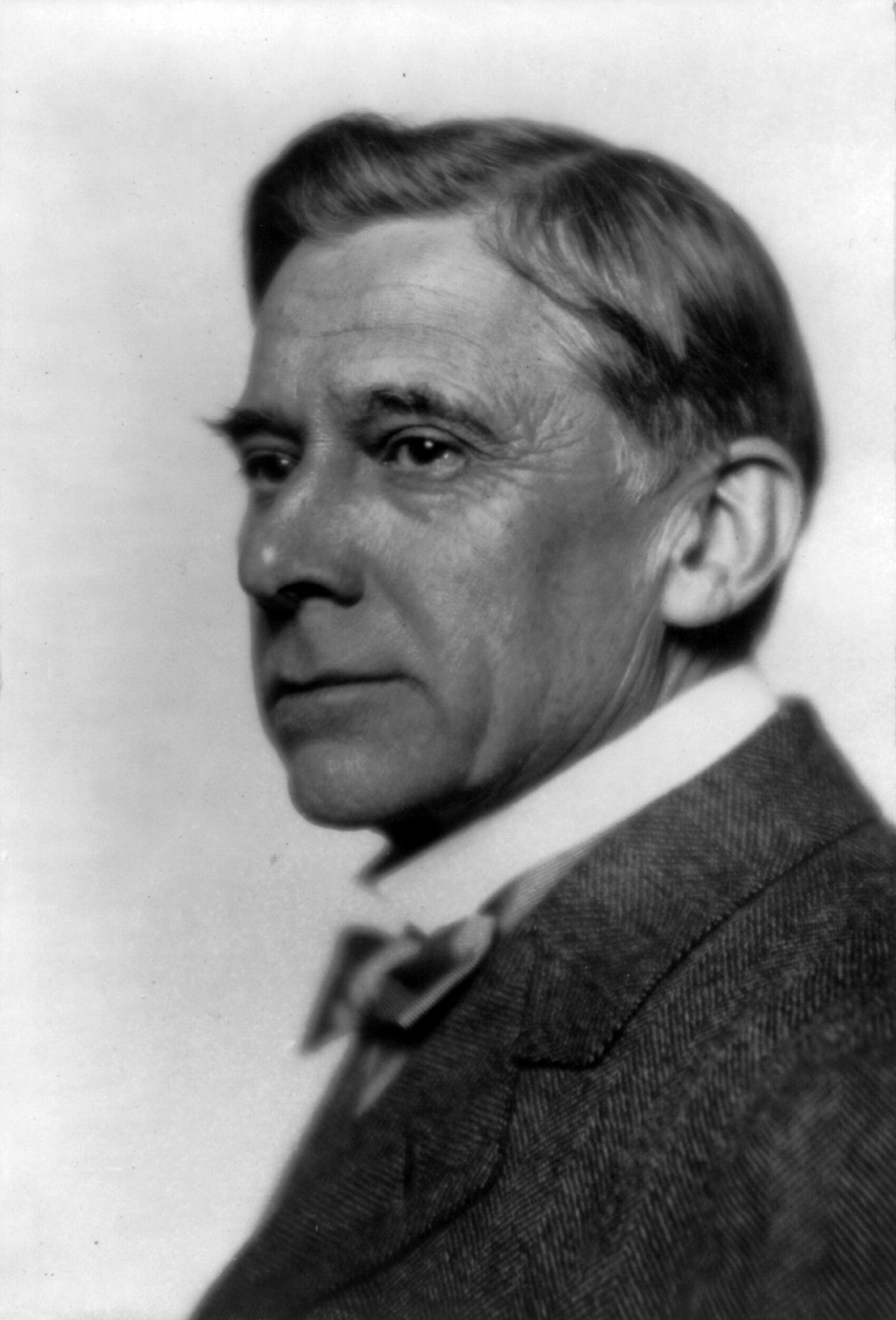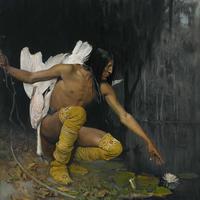More about George de Forest Brush
Works by George de Forest Brush

Sr. Contributor
In 1855, George de Forest Brush was born to a businessman father and an artist mother in the town of Shelbyville, Tennessee.
The family, originally from New England, would move to Connecticut the following year. As a child, Brush apparently had some health problems that prevented him from attending school on a regular basis, so his mother ended up home schooling him. That wasn’t so bad, as she appreciated the arts, read him poetry, took him to museums, and most importantly, encouraged his love of drawing at an early age.
At the age of fifteen, he moved (or was sent) to New York City to attend the National Academy of Design, where he would study and refine his artistic techniques. He apparently impressed the right people, since he was awarded a scholarship to attend the prestigious Ecole des Beaux-Arts in Paris. He trained with Jean-Leon Gerome there for the next four years before returning home to America. One of his first “clients” as an artist was his father, Alfred Clark Brush, who was not too pleased with his son’s choice of career. In fact, he had such disdain for the idea of his son being a full-time artist that it would eventually lead to an estrangement between the two that lasted until the elder Brush’s death in 1908.
Before he had time to really establish himself as a working artist, George made plans to travel to the western U.S to join his older brother, also named Alfred, who had been hired by an oil speculator from New York to acquire land in Wyoming. This may seem kind of random or even impulsive, but this was actually a pretty normal thing to do in the mid to late 19th century, thanks to the Homestead Act, which awarded citizens land acreage as long as they had not fought for the Confederacy during the Civil War. The important thing is that George did go west, and this would be the beginning of his infatuation with painting Native Americans.
George arrived in Wyoming in 1881 and, some time after his arrival, traveled from Rawlins to Fort Washakie, also in Wyoming. He was able to stay in the camps of both the Arapahoe and Shoshone tribes, even though they happened to be enemies at the time. Native Americans were not the only subjects Brush would paint, but they are probably his most well-known. Brush was likely influenced by another American named George who liked to paint Native Americans, George Catlin; Brush visited an exhibition of Catlin’s work when he was a teenager, and even had a conversation with him about “the red man.”
Out west, Brush set up a “studio” in a tent, and began painting portraits of the local tribe members; later in his career he would paint Chief Washakie, either from memory or from studies made while he was at the Fort. From there, he traveled north to the Crow reservation in Montana, where he apparently made as much of an impression on the locals as they did on him, for he was allowed to participate in some of their ceremonial dances, which was pretty much unheard of for a white man.
So, Brush ended up painting many Native Americans and scenes featuring Native Americans, some depicting an “idealized” version of them, and others showing traditional activities, such as hunting, fishing, and weaving. He would later move on to painting portraits, including images of his wife and children, in a “Madonna” style that shows influences from Renaissance art.
On a final note, Brush and his longtime friend and fellow artist, Abbott Thayer, were pioneers in the art of camouflage, at least for military purposes. Early efforts at camouflage were known as counter-shading or “protective coloration.” This started out as the study of how animals and birds blended in with their surroundings in order to hide from predators and then applying that to naval vessels in the Spanish-American War.
Brush died in New Hampshire in 1941.
Sources
- Anderson, Nancy K., and James C. Boyles. George De Forest Brush: the Indian Paintings Published to Accompany an Exhibition Held at the National Gallery of Art, Washington, 14 September 2008-4 January 2009; Seattle Art Museum, 26 February - 24 May 2009. Wa
- Behrens, Roy R. "Revisiting Abbott Thayer: Non-Scientific Reflections about Camouflage in Art, War and Zoology." Philosophical Transactions: Biological Sciences 364, no. 1516 (2009): 497-501. http://0-www.jstor.org.pacificatclassic.pacific.edu/stable/4048
- Bowditch, Nancy Douglas. George De Forest Brush; Recollections of a Joyous Painter. Peterborough, N.H: Noone House, 1970.
- Morgan, Joan B. "The Indian Paintings of George De Forest Brush." American Art Journal 15, no. 2 (1983): 60-73. doi:10.2307/1594337.
Featured Content
Here is what Wikipedia says about George de Forest Brush
| Part of a series on |
| Georgism |
|---|
 |
George de Forest Brush (September 28, 1855 – April 24, 1941) was an American painter and Georgist. In collaboration with his friend, the artist Abbott H. Thayer, he made contributions to military camouflage, as did his wife, aviator and artist Mary (called Mittie) Taylor (Whelpley) Brush, and their son, the sculptor Gerome Brush.
Check out the full Wikipedia article about George de Forest Brush











